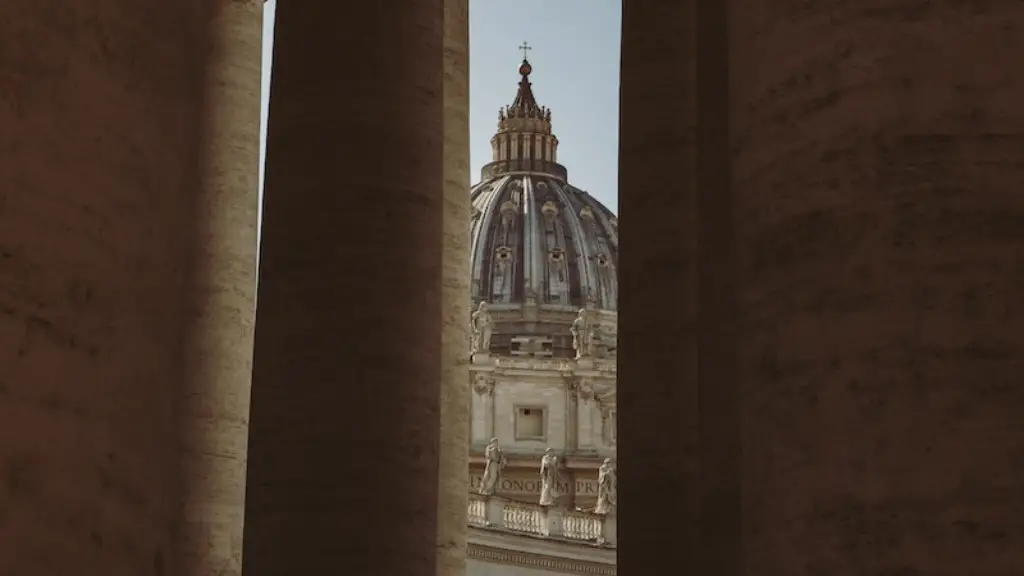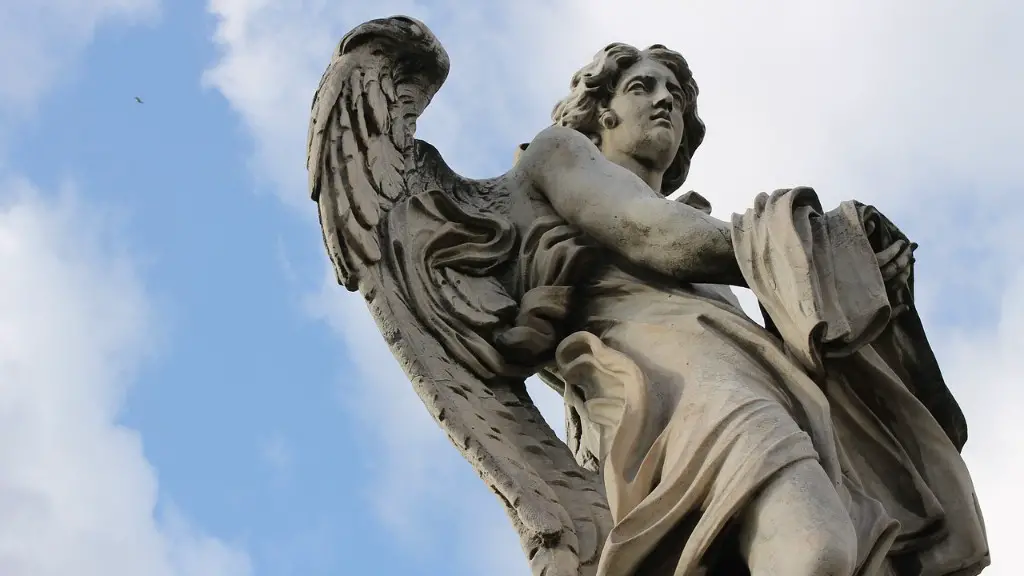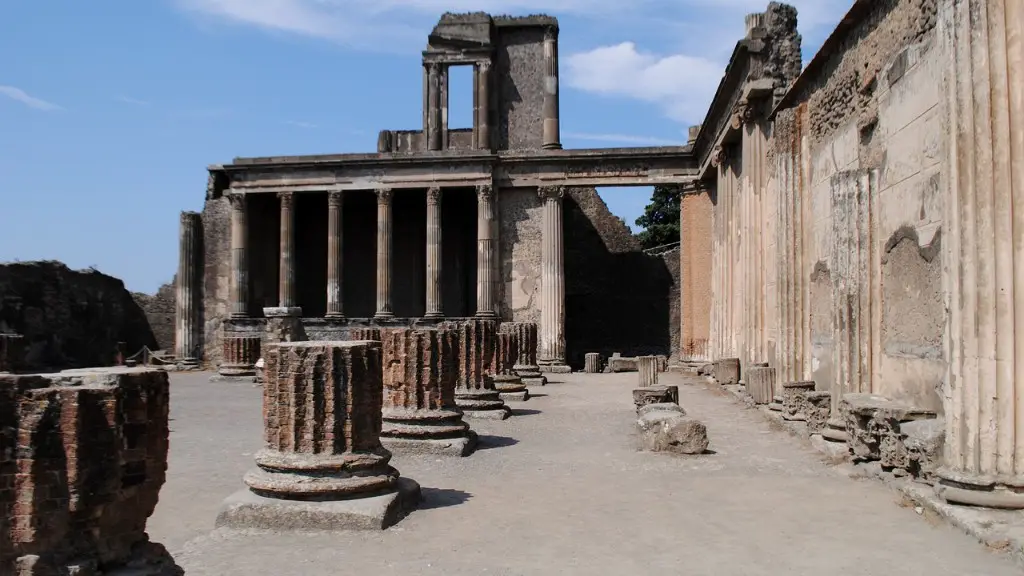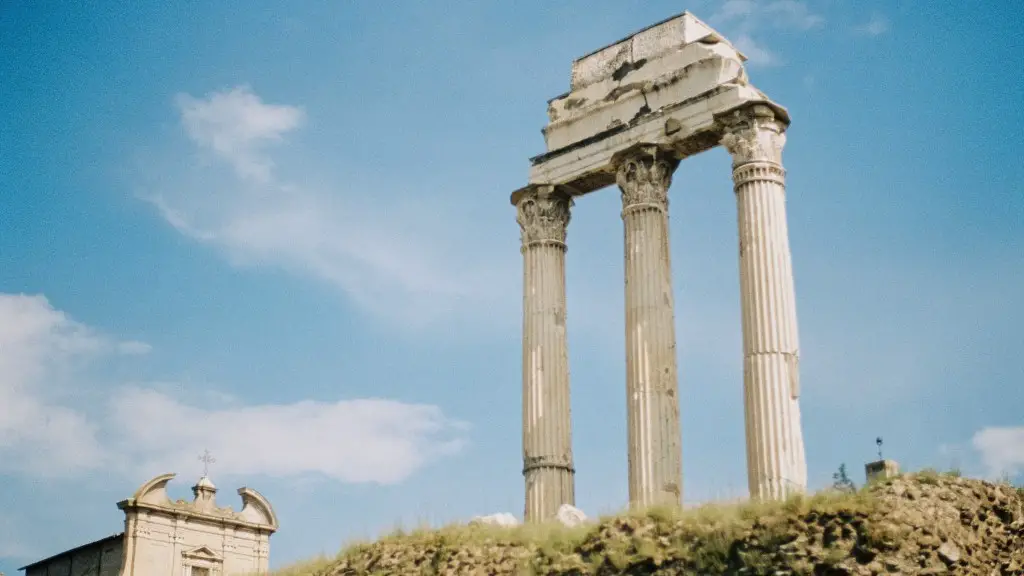The ancient Romans were very skilled at architecture and engineering. They built some of the most impressive buildings and bridges in the world. Many of their buildings are still standing today.
Yes, ancient Romans were skilled at architecture. Some of the most iconic and well-known buildings in the world were constructed by them, such as the Colosseum and the Pantheon. Not only were they able to create impressive structures, but they also developed new techniques and methods that are still used by architects today.
How were Romans so good in architecture?
The use of vaults and arches in construction was an innovation that allowed for much more impressive public infrastructure to be built. This was possible due to a better understanding of building materials and how to use them effectively. Some of the most notable examples of this type of architecture are the aqueducts of Rome, the Baths of Diocletian and the Baths of Caracalla, and the basilicas and Colosseum.
Architecture was a very serious tradition in ancient Rome. Rome’s first great architect was Vitruvius, who in the 1st century BCE wrote Rome’s first major treatise on architecture: De Architectura. Vitruvius had a profound influence on Roman architecture, and his ideas were widely adopted in the following centuries. Roman architecture is characterized by its use of arches and vaults, which were made possible by the use of concrete, a Roman invention. Roman architecture is also characterized by its use of columns and pediments, which were derived from the Greek architectural traditions.
What were Romans skilled at
The Roman Empire was one of the largest empires in history and it was only possible because of the Romans’ skills in administration, organization, and engineering. The Roman military was highly trained and disciplined and their bureaucracy was efficient. Without these qualities, the Romans would never have been able to manage their sprawling empire.
The Romans were very skilled engineers and built bridges, public baths, huge aqueducts for carrying water to their cities, and long, straight roads, many of which still exist today.
What made Roman architecture unique?
Ancient Roman architecture is some of the most iconic and well-preserved in the world. Many of the buildings and structures that remain today were built using new materials and technologies at the time, including concrete and the arch. These buildings were typically very strong and well-engineered, which is why so many of them are still standing today.
Buildings designed in a post-and-lintel system are typically more impressive when viewed from the outside. This is because the architects have to rely on two upright posts (usually in the form of columns) to support a horizontal block (known as a lintel) across the top. This creates a more striking appearance, especially when the columns are adorned with ornate carvings or other decorations.
Why are Roman arches so strong?
The ancient Romans were extremely skilled at engineering and construction, and a big part of that was due to their development of a strong and durable type of concrete. This concrete was made from a mix of volcanic sand and lime, and it was able to support huge amounts of weight. This allowed the Romans to build all sorts of large and impressive structures, like the aqueducts we discussed earlier.
Innovations of Roman Architecture
The arch and the vault:
The Romans did not invent but did master both the arch and vault, bringing a new dimension to their buildings that the Greeks did not have.
Domes:
The Romans were the first to use concrete extensively and were able to create domes of extraordinary size and strength.
Domestic architecture:
Roman domestic architecture was typically simple and utilitarian, but occasionally quite elaborate.
Public buildings:
Roman public buildings were typically large and grandiose, designed to impress and awe the populace.
The Colosseum:
The Colosseum is perhaps the most iconic Roman building, a massive amphitheatre used for public entertainment.
Aqueducts:
The Romans built an extensive network of aqueducts to bring water to their cities.
Triumphal arches:
Triumphal arches were built to commemorate Roman victories and were typically quite ornate and impressive.
How did Romans build architecture
The Romans were the first to develop brick making techniques that became the main building material in the 1st century AD. Their brickwork, called opus latericium, was a form of construction in which bricks of thick structure were used to face a core of opus caementicium. This type of brickwork was used for the walls of houses, Roman baths, and monuments.
The ancient Romans were incredible engineers and are responsible for some of the most impressive feats of architecture and engineering that we know of today. They were able to take technology from the east and adapt it to their own needs, creating a completely new and advanced way of bringing running water into cities. This not only made life much easier for Roman citizens, but also allowed for the development of some of the most impressive public baths and fountains in the world. Roman architecture was also heavily influenced by the Greeks and Etruscans, and this can be seen in the way that they used columns and arches in their buildings.
What was a key element of Roman architecture?
Arches were extremely used in Roman architecture. The Greeks followed the post lintel form of construction and Romans sought a change to this as arches could provide longer uninterrupted spaces. They did extensive experimenting in the use of arches.
The technology of the Roman Empire was impressive for its time. The Romans borrowed technologies from the Greeks, Etruscans, Celts, and others, and used these technologies to build impressive structures, some of which still stand today. With limited sources of power, the Romans were able to create a complex and powerful empire.
Did Rome have good architecture
Roman architecture is a style that developed in the Roman Republic and Empire. It is characterized by its use of arches and vaults, which allowed for the construction of large and stable buildings, and by its use of classical orders such as the Corinthian order. Roman architecture is also known for its use of concrete, which was a new material at the time.
Roman architecture was very influential in the development of Western architecture, and many of the most iconic buildings in the world, such as the Colosseum and the Pantheon, are based on Roman models.
While the exact recipe for Roman concrete is unknown, it is thought to contain a mix of lime, volcanic ash, and seawater. This concrete is incredibly strong and durable, due in part to the presence of aluminous tobermorite crystals. These crystals form when the seawater reacts with phillipsite, a type of volcanic rock. This makes Roman concrete a candidate for the most durable building material in human history.
Why were Romans such good builders?
The Romans were fantastic engineers and took full advantage of durable materials to engineer their buildings. Kiln-fired bricks were virtually indestructible, stone was pretty durable, and concrete was harder than stone in some cases.
One of the most distinctive features of Roman design is the combination of arcuated (arched) and trabeated (post-and-lintel) construction. This means that they made use of both arches and columns in their buildings. At first, they were tentative in using arches between columns, but eventually the arch became the main structural element. This is one of the things that makes Roman architecture so unique and recognizable.
What are the characteristics of Roman style architecture
Romanesque churches are characterized by their semicircular arches for windows, doors, and arcades. They also have barrel or groin vaults to support the roof of the nave, massive piers and walls to contain the outward thrust of the vaults, side aisles with galleries above them, and a large tower over the crossing.
The researchers from MIT believe that the lime clasts are responsible for the longevity of Roman concrete. The lime clasts help to create a micro-environment that is ideal for the concrete to cure and harden. This micro-environment is created due to the way the lime clasts interact with the water and air.
Conclusion
There is no definitive answer to this question as there is no evidence to suggest that the ancient Romans were either particularly skilled or unskilled at architecture. However, given the impressive nature of many of their buildings and the fact that they were able to construct them using relatively primitive technology, it is reasonable to assume that they were at least competent in this area.
Yes, ancient Romans were skilled at architecture. They produced some of the most impressive and iconic structures in history that are still revered and admired today. Their legacy continues to influence architecture all over the world.





